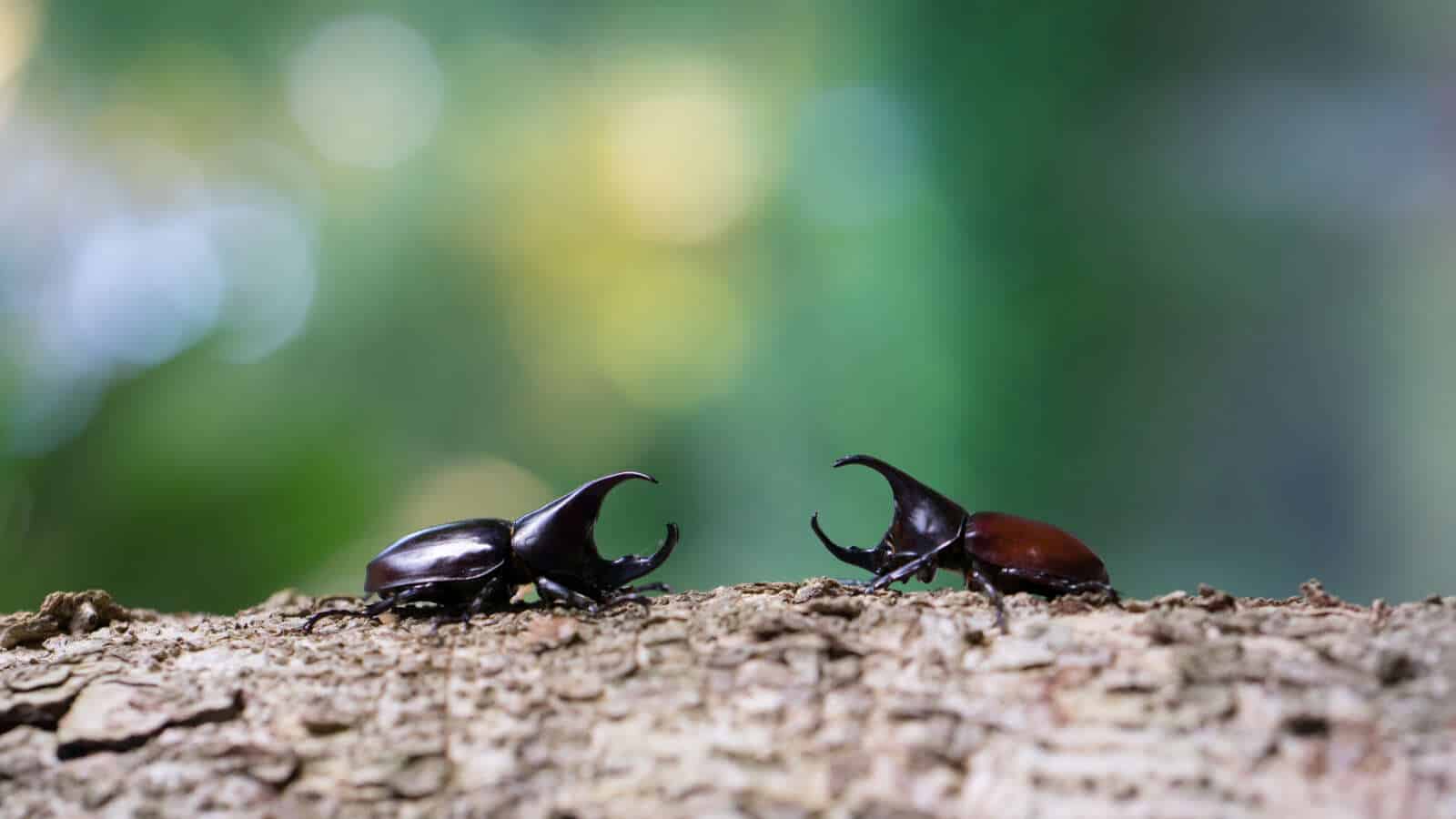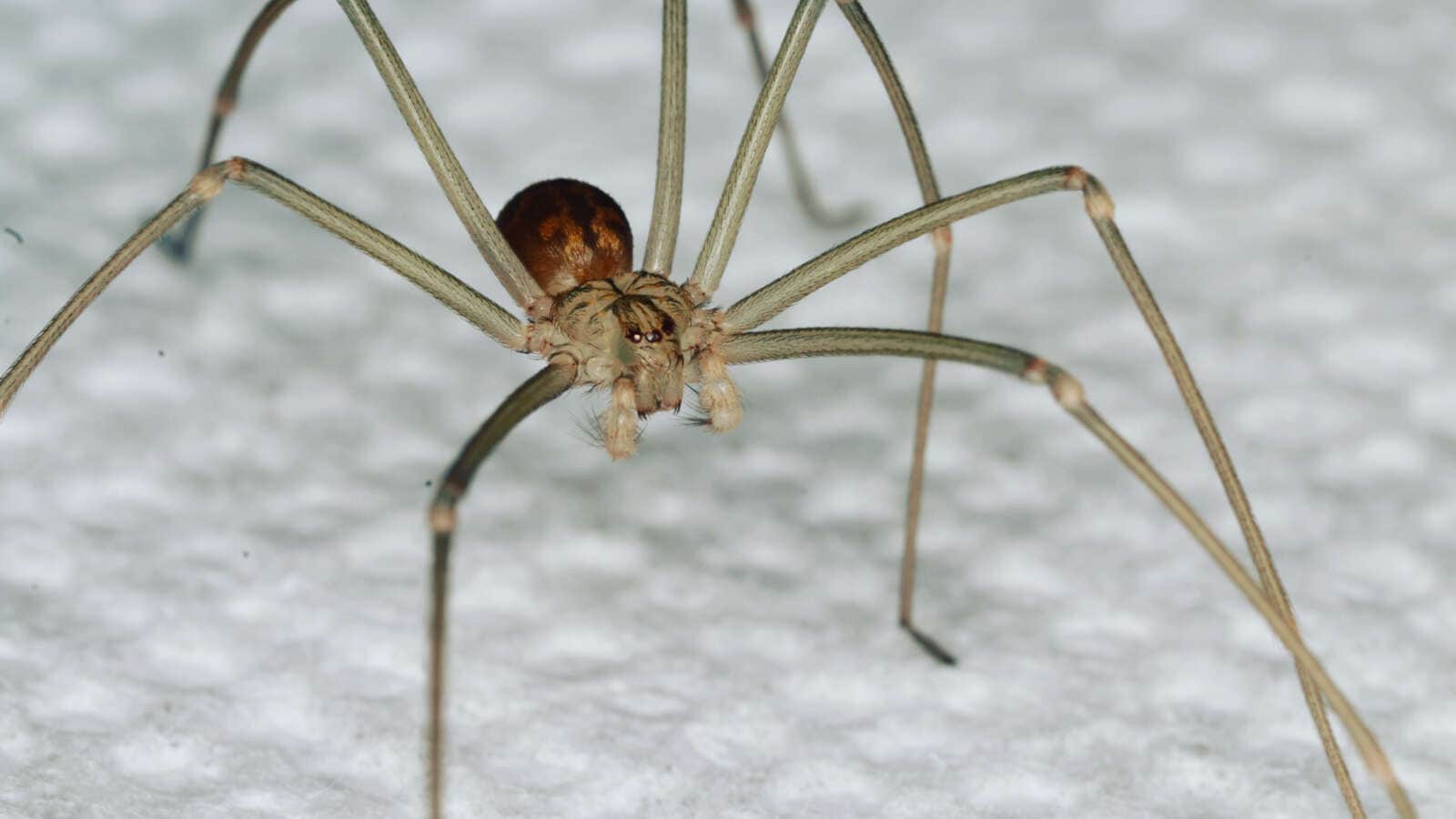The Most Common Pests On Hiking Trails
It may sound strange for National Take a Hike Day to be in the middle of November (the 17th, to be exact), but this time of year is actually popular for long hikes. The weather is finally cooling off, the snow and freezing temperatures aren’t consistent yet, and the insects are beginning to expire or seek out their overwintering spots. That being said, a hike on a nature trail is not a pest-free experience any time of year. Every species has its own life cycle and weather preferences, so it’s certainly possible to see some creepy-crawlies in November. As far as the entire year goes, there are four types of pests that are commonly found on hiking trails across the country. Let’s take a look at how these critters survive in this environment before we provide our suggestions on how to enjoy your hike free of any pests, hitchhiking or otherwise.
Stinging Insects

These pests have the largest immediate risk factor, purely because their painful stings are a direct result of their nest and colony being disturbed. Hornets, wasps, yellow jackets, and bees are all commonly found on hiking trails. The abundance of trees and tall plants makes it easy for certain species to keep their nests elevated above the trail. Yellow jackets are unique with their preference of nesting on the ground, which makes it even easier to accidentally disturb the nest. Contrary to what cartoons taught us, stinging insects don’t seek out people to sting for their own enjoyment. They will only release their “alarm” pheromones if they detect a threat to their home and colony, so you don’t have to worry about a swarm randomly chasing you. But if you shake or knock down a nest, it’s an entirely different story.
There are a few key ways you can prevent stinging insects from seeking you out if you know that you’ll be hiking in a wasp-heavy area. For one, avoid wearing anything floral in all meanings of the word. This includes floral-patterned clothing, floral perfume, and floral hair or skin products. Stinging insects are naturally drawn to these because of their primary food source: flower nectar. If you know you’re allergic to stings, be prepared for your hike by packing any medication and products you need in case you get stung. Also, if you’re hiking with a group, make sure that everyone knows about your allergy and what to do if you are stung. Whether or not you are allergic, remove the stinger from your skin immediately after the insect stings you. Scrape it off with a credit card or other flat object, as squeezing it can release even more venom. You are not guaranteed to get stung every time you hike, and as long as you use caution and move slowly around any nests you find, you should be good to go.
Ticks
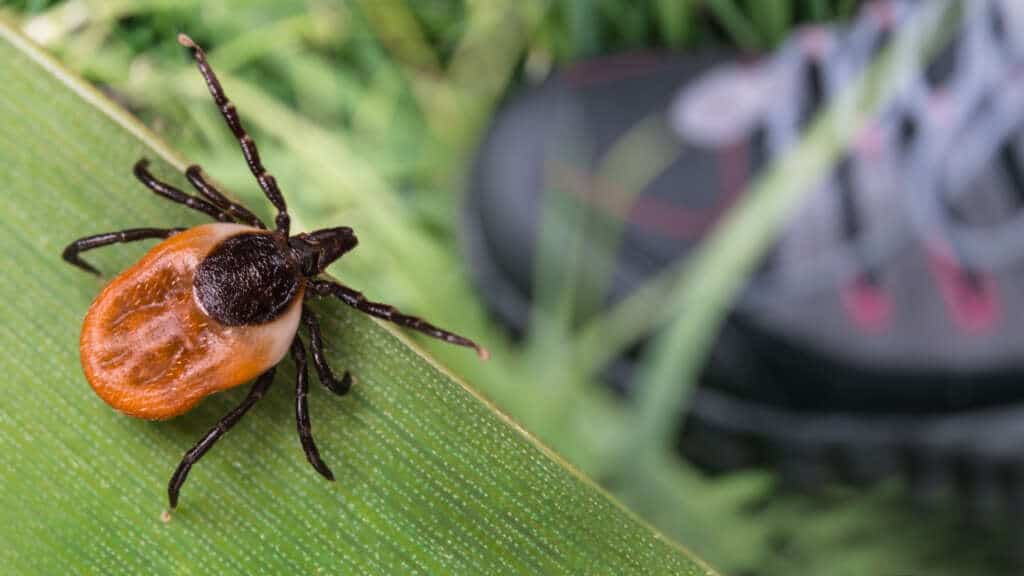
Another infamous hiking pest, ticks are unfortunately populous in wooded areas. They like to hide in thick brush, tall grass, and overgrown plants. Since ticks can’t fly, they stay low to the ground and crawl up the plant to get some slight elevation. Most species need to find a host within a month, but some ticks can live for a few months without any blood meals. However, just because they can doesn’t mean they want to, so ticks won’t hesitate to hitchhike onto a mammal that passes by their habitat. When a human or animal gets close enough to a waiting tick, the pest will sneakily crawl onto the mammal and slowly make its way to a spot that it can safely feed without detection.
There are plenty of bloodsucking pests that we would like to avoid, but ticks are some of the most unexpectedly dangerous ones. There are multiple tick-borne illnesses that impact both people and pets every year. The most common ones include Lyme disease, Rocky Mountain Spotted Fever, anaplasmosis, and babesiosis. The easiest way to avoid getting a tick is to stay on the marked path and not venture off into any thick greenery. Also, try your best to avoid brushing against any tall grass and brush, as any waiting ticks can attach themselves to you if you get close enough. After you finish the hike, check yourself and everyone else in your party for any ticks. Pay close attention to folds of clothing and the neck area, as ticks favor these.
Spiders
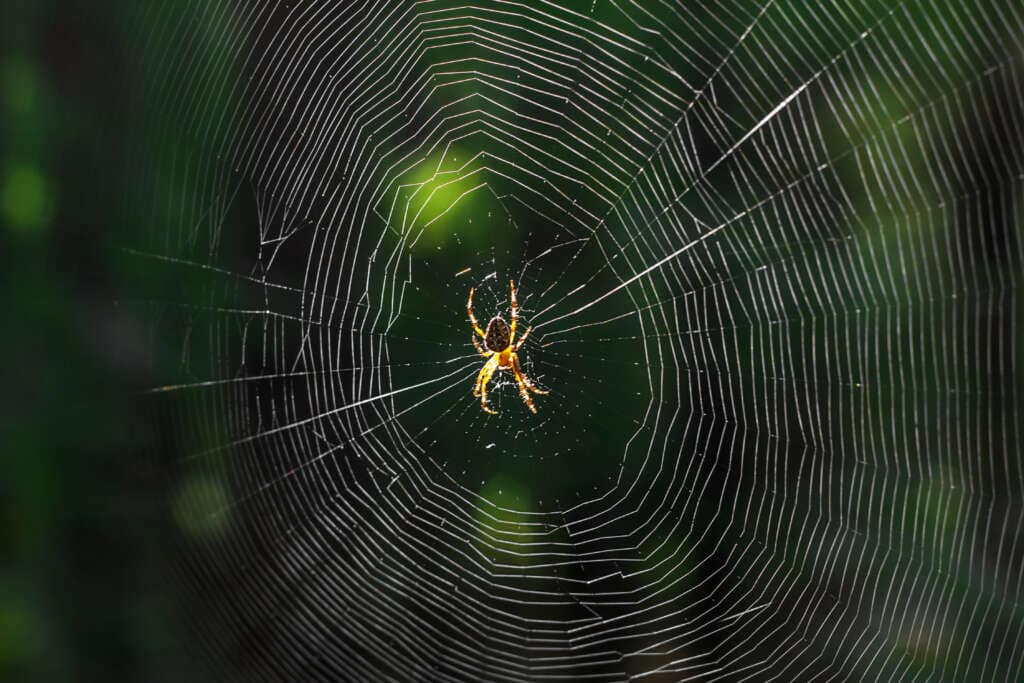
It turns out that spiders are not just a problem for abandoned basements and bountiful gardens. Arachnophobes beware: spiders can be hidden everywhere along a hiking trail. The good news is that most of them are harmless and too small to see, so you don’t have to worry about most species found in this environment. The bad news is that some of the most dangerous species also like to stay in the more isolated areas along the trail, so it is possible to stumble upon them in secluded spaces. Black widows, brown recluses, and wolf spiders are some of the more worrisome kinds, but they will not just hang out (literally) in the middle of the path. You would have to venture into the greenery to find them, so staying on the trail is — once again — a good idea.
Spiders like to stay hidden from view, not only for their own safety, but also to catch their prey by surprise. They can be found within wood piles, thick brush and plants, and around any buildings. It’s thankfully rare to receive a spider bite on a hike since these pests will only unleash this defensive move when they are disturbed. Many species like to weave their webs in between trees, so keep an eye out for any silky strands when walking around trees. Some experienced hikers recommend using a stick to knock down any webs before walking through. It’s also wise to quickly inspect an area before sitting or setting your backpack down. There’s no hiking souvenir worse than a hidden spider in your clothing or bag!
Mosquitoes
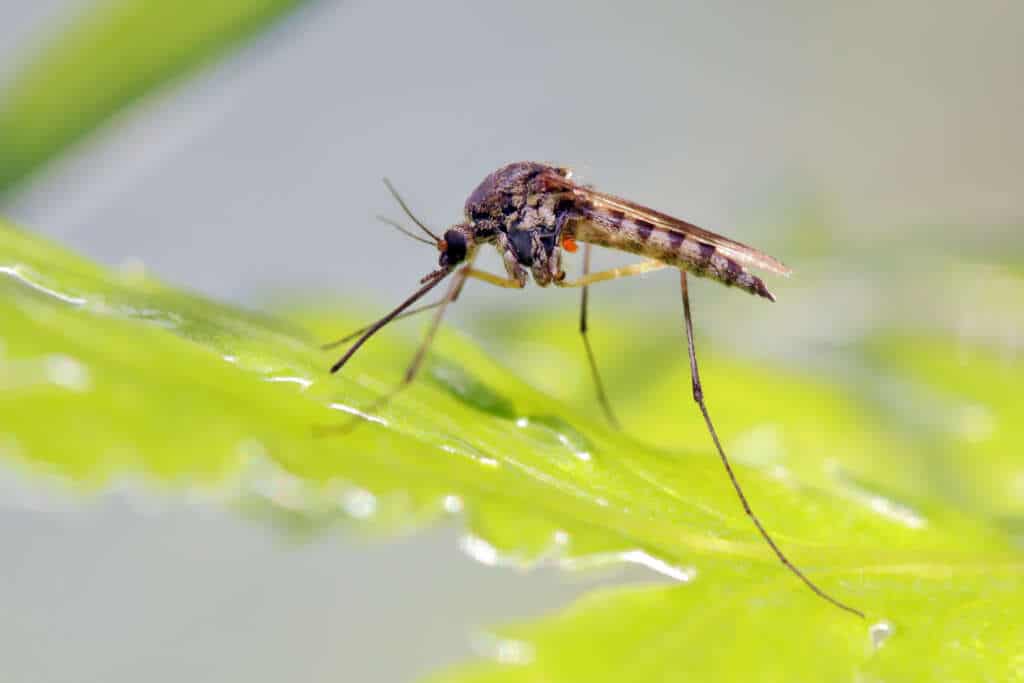
This pest is only a true problem in the warm months, but that timeframe just so happens to coincide with the most popular days to go on a hike. Mosquitoes are mostly found near areas with fresh idle water because they lay their eggs in the water itself. Hiking trails with ponds and lakes tend to have more problems with mosquitoes than trails without any water. These bloodsuckers are the most active in hot and humid weather, with their peak feeding times being dusk and dawn. If you go on a lot of hikes throughout the summer, you know all about the frustration that comes with being relentlessly bitten by hungry mosquitoes.
Mosquitoes seek out food sources by using a few different techniques, two of which come in handy on a hiking trail. One is their infrared vision, which they use to detect our body heat and separate the mammals from the cold-blooded creatures. It’s easy for mosquitoes to see our body heat when we exercise because we naturally emit more heat. This goes hand-in-hand with their other ability: seeing our carbon dioxide output. Since we exhale carbon dioxide with every breath and tend to breathe at a more rapid rate when exercising, mosquitoes can easily find their next meal in a person who’s breathing hard as they walk uphill. These bloodsuckers can spread diseases, like malaria and Zika virus, so it’s important to protect yourself with insect repellant and longer clothing if you know you will be hiking in a mosquito-heavy area.
How to Have a Pest-Free Hike

We included some pest-specific prevention tactics in the earlier sections, but it’s time to discuss the most general yet efficient ways to enjoy a pest-free hike. The key factor to remember is that pests found along trails and paths will typically leave you alone if their home isn’t disturbed, so being aware of your surroundings is essential on any hike.
With that being said, we recommend doing tasks before, during, and after your hike in order to keep the entire experience pest-free:
- Cover any exposed skin that is likely to come in contact with plants and trees. If it’s warm outside, you can stick to lighter fabrics that still protect you from bloodsucking pests. Leggings, long-sleeved shirts and socks are popular choices for this task.
- Apply insect repellent before the hike. The most effective kinds have DEET, which is the strong ingredient responsible for actually repelling the pests.
- Don’t wear any scented lotions, perfume, or hair products. Floral and sweet scents attract different insects, especially stinging insects.
- Stay on the designated path or trail at all times. The further you venture into thick greenery and tall grass, the more likely you are to stumble upon dangerous critters like ticks and snakes.
- Don’t stick your hands or feet in areas hidden from view, like under rocks, in hollow trees, and in bushes. These are where all kinds of pests like to hide, and they won’t like being found.
- Shower and change your clothes immediately upon returning from a hike. Even if you don’t see any pests on you, it’s still a good idea to completely clean yourself after being out in the middle of every pest’s natural habitat.
Pointe Tells Pests To Take A Hike
The pests that live on a hiking trail aren’t necessarily close to our homes and businesses, but all of the types that we mentioned here can also be found in our backyards and homes once they find an entry point. Instead of wasting your time on DIY methods and store-bought sprays that don’t work, contact the experts at Pointe Pest Control! Our technicians are all highly-trained and experienced in solving all kinds of local pest problems. We begin every service with a full inspection of the property in order to assess the areas of pest activity and determine which species are involved. These findings inform the customized treatment plan that we then create on site, which is targeted to solve your specific pest problems. We are dedicated to protecting your home or business from pests all year long. Contact us today for a free quote on our services and to see the Pointe Difference in your pest control!
Citations
A hiker’s guide to insect control. (2020, May 29). Young Environmental Solutions, Inc. Retrieved November 2, 2023, from https://www.yespest.com/2020/05/29/a-hikers-guide-to-insect-control
Bothersome bugs. (n.d.). Hiking Dude. Retrieved November 2, 2023, from https://www.hikingdude.com/hiking-bugs.php
Common hiking trail bugs. (2023, September 5). Maggie’s Farm. Retrieved November 2, 2023, from https://maggiesfarmproducts.com/blogs/bug-help/hiking-bugs
Insects. (n.d.). American Hiking Society. Retrieved November 2, 2023, from https://americanhiking.org/resources/insects/




